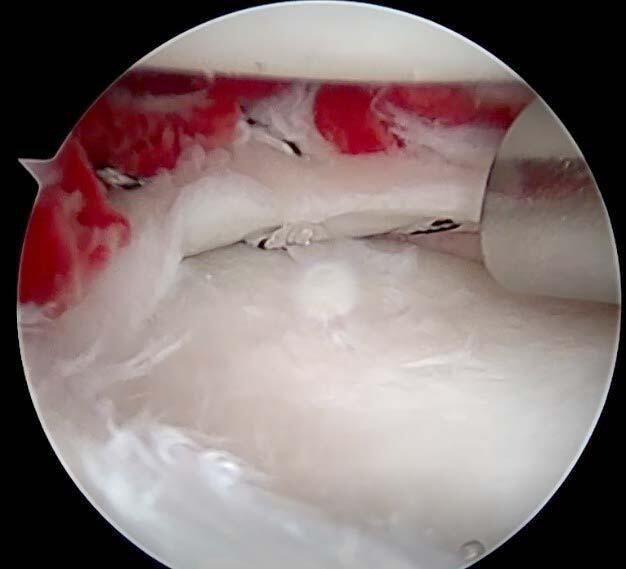A research group led by Professor Yusuke Hashimoto and Professor Hiroaki Nakamura of the Graduate School of Medicine, Osaka City University analyzed bone marrow derived fibrin clots and revealed that they contain abundant growth factors, which can be used for meniscal suturing to obtain good clinical outcomes.
The meniscus that is present in the joints of the human body does not repair itself once it is damaged. Although there have been several newer methods of repairing the damaged meniscus (suture) to prevent re-rupture, the re-rupture rate is believed to still exceed 20%. Strategies to accelerate meniscal healing include improving local blood circulation, implantation of a blood clot, and filling the joints with bone marrow fluid by drilling into the bone at the joint. However, the effects of these methods have not been fully verified, and it is not clear which one is the best.
The research group identified blood as a key component in testing several methods. Therefore, they focused on a method of solidifying blood from the bone marrow fluid obtained from the bones in joints. In the study, after obtaining consent from five patients undergoing meniscal suture surgery, bone marrow fluid and peripheral blood were collected during surgery, fibrin clots were prepared, and cytokines were measured. As a result, it was found that in the bone marrow fluid fibrin clot, growth factors (bFGF, TGFβ, SDF-1) were more abundant than in the peripheral blood fibrin clot. In addition, we investigated the pre- and post-operative clinical results and the meniscal healing rates in 30 patients who underwent meniscal suturing with bone marrow fibrin clots for avascular zone injury and could be followed up for more than two years after surgery.

Credit: Osaka City University
As a result of the examination, the postoperative clinical results and the meniscal condition as observed by MRI were significantly improved, and simple X-ray evaluation showed no significant progress of knee osteoarthritis before and after the operation. The rates of poor clinical performance, poor anatomical performance, and re-injury were 10%, 6.7%, and 3.3%, respectively, showing results comparable to those of previous reports. Dr. Hashimoto said, "Since the bone marrow derived clot is basically the same as blood, it clots normally, and normal surgery is possible without any significant departures from conventional methods. The clinical results were also satisfactory. This is one of the simplest and easiest ways of promoting healing, and I hope it will spread in the future."
- ■ Bone marrow fluid-derived fibrin clot: A blood clot (coagulated blood) made from the patient's own bone marrow fluid.
- ■ Avascular zone: The area of the meniscus where blood does not flow.
It does not easily heal as it lacks blood supply. - ■ Osaka City University's English press release can be found at the following link:
https://www.osaka-cu.ac.jp/en/news/2021/snap-crackle-pop-bone-marrow-derived-fibrin-clot-as-better-source-for-meniscal-repair
This article has been translated by JST with permission from The Science News Ltd.(https://sci-news.co.jp/). Unauthorized reproduction of the article and photographs is prohibited.




